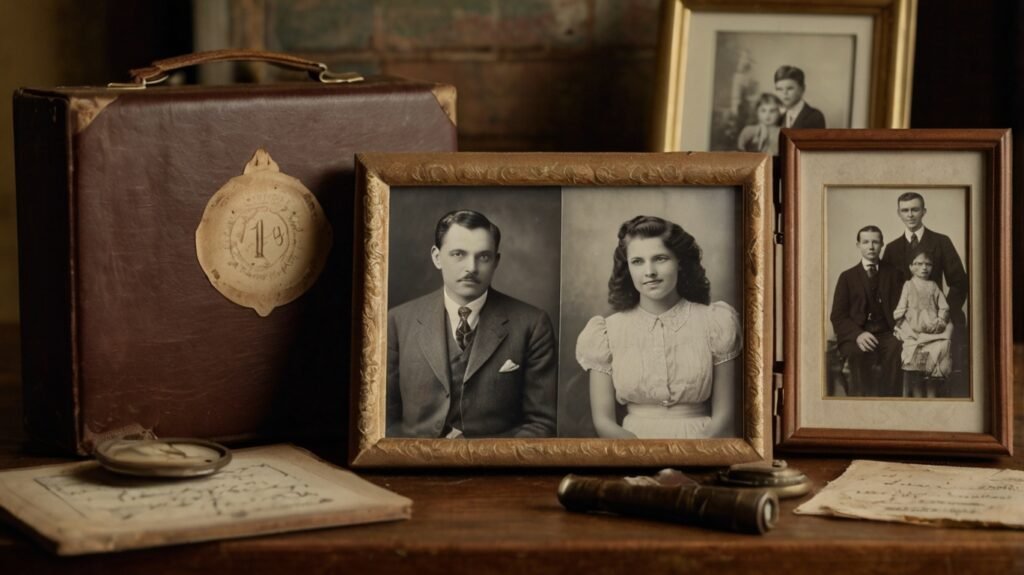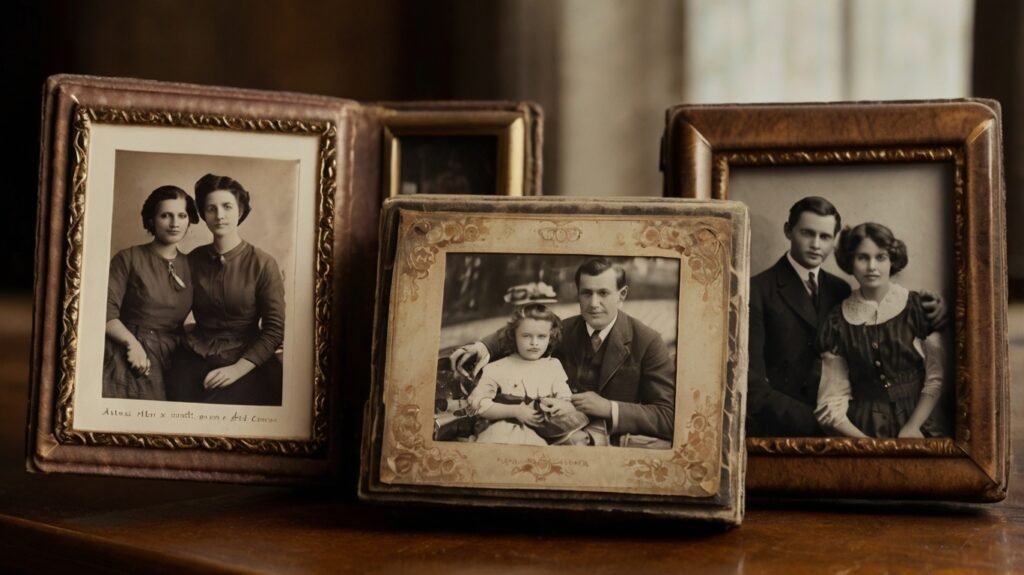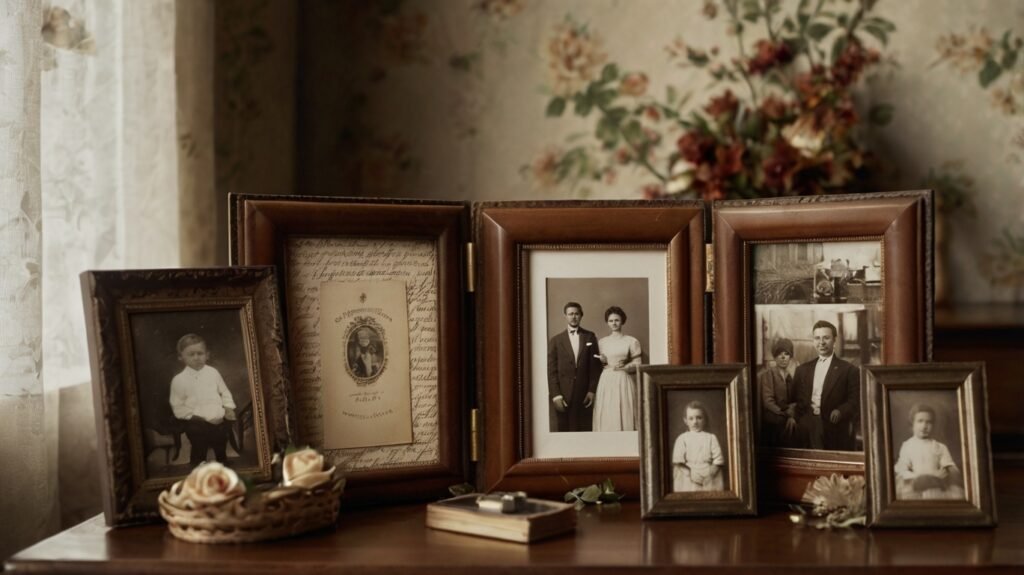Old family photos are more than just images—they’re treasured memories that connect us to our past. Whether you’ve inherited a box of faded snapshots from your grandparents or have amassed decades of personal history, preserving these photographs is crucial for safeguarding your family legacy. In this comprehensive guide, well explore 10 essential tips for preserving old family photos that blend traditional wisdom with modern techniques. From handling delicate prints to digitizing your collection, these actionable strategies will help ensure your memories remain intact for future generations.
Table of Contents
ToggleIntroduction
Imagine dusting off an old family album and feeling a wave of nostalgia as you flip through images of childhood celebrations, historic milestones, and candid moments that tell your family’s unique story. However, as time passes, these irreplaceable photographs can succumb to the effects of aging, environmental damage, and careless handling. Are you struggling with how to preserve these precious memories? If so, you’re not alone.

In today’s digital age, preserving old family photos requires a thoughtful blend of modern technology and time-tested conservation methods. This post dives into proven techniques, practical tips, and personal insights that can help you protect your family history. You’ll find helpful guidance that not only satisfies the most recent SEO and content quality requirements but also speaks to you personally, regardless of your degree of experience as an archivist or your level of curiosity as a novice.
By the end of this guide, you’ll have a clear roadmap for preserving old family photos and keeping your family’s visual legacy safe and sound. Let’s explore these ten essential tips in detail.
Tip 1: Handle with Care
The first rule of photo preservation is to treat your photographs with the utmost care. Old photos are often fragile due to years of exposure to light, humidity, and handling. Here are some practical steps to minimize damage during handling:
– Wash and dry your hands thoroughly before touching any photos.
– Wear cotton or nitrile gloves to avoid transferring oils and dirt from your skin to the delicate surface of the prints.
– Hold the photo by its edges rather than touching the image surface, which can reduce the risk of smudges or accidental tears.
A personal tip: I remember the first time I handled a faded family portrait—I realized that even the gentlest touch can have lasting effects. Taking a few extra seconds to handle each photo carefully can preserve its quality for decades to come.
Tip 2: Clean Your Photos Gently
Dust, fingerprints, and other contaminants can gradually degrade the quality of old photos. Before storing or digitizing them, it’s important to clean them carefully:
– Use a soft, clean brush or a microfiber cloth to gently remove dust.
– For more stubborn particles, lightly use a soft eraser designed for paper materials, but test it on a less valuable photo first.
– Avoid using liquids or chemical cleaners that can cause further damage. When in doubt, consult a professional conservator for advice on cleaning specific types of photographs.
Regular cleaning can reveal details that might have been obscured by years of neglect and can significantly extend the life of your family photos.
Tip 3: Store in Archival-Quality Materials
The materials you use for storing your photos play a critical role in their preservation. Ordinary paper and plastic may contain acids that accelerate deterioration. Instead, invest in archival-quality products:
– Acid-Free Boxes and Albums: Use storage boxes and photo albums made from acid-free, lignin-free materials. These products provide a stable, neutral pH environment that protects your photos.
– Mylar or Polyester Sleeves: Insert individual photos into protective sleeves to guard against dust, moisture, and accidental bending.
Storing your photos in these archival-quality materials is one of the best investments you can make for long-term preservation. Not only do they prevent yellowing and deterioration, but they also offer an extra layer of security during handling and transportation.
Tip 4: Digitize Your Collection
In today’s digital era, one of the most effective ways to preserve old family photos is to digitize them. Scanning your photographs creates high-resolution digital copies that are easy to store, share, and back up. Here’s how you can start:
– Invest in a High-Quality Scanner: Look for scanners that offer high resolution (at least 600 DPI) to capture all the details of your photos.
– Create a Consistent Digitization Workflow: Organize your photos by date, event, or family member before scanning. This helps streamline the process and ensures that digital files are properly labeled.
– Edit and Restore Digitally: Use photo editing software to adjust color balance, remove dust, and restore faded images. Digital restoration can often bring old photographs back to life.
Digitizing your photo collection not only provides a backup in case of physical damage but also makes it easier to share your family history with relatives and friends online.
Tip 5: Back Up Digital Copies
Once you’ve digitized your old family photos, it’s essential to safeguard your digital files through regular backups. Digital copies are only as safe as the storage methods you choose:
– Cloud Storage: Utilize reputable cloud storage services such as Google Drive, Dropbox, or specialized photo backup services. Cloud storage offers accessibility and off-site protection.
– External Hard Drives: Maintain an additional backup on an external hard drive. Keep the drive in a secure, temperature-controlled location.
– Redundancy Is Key: Consider the 3-2-1 backup rule: three copies of your data, on two different types of media, with one copy stored offsite.
Regular backups ensure that even if one storage method fails, your family’s cherished memories remain protected and accessible.
Tip 6: Control the Environment
Environmental conditions have a profound effect on the longevity of photographs. To extend the life of your family photos, maintain a controlled environment:

– Temperature and Humidity: Ideally, store photos in a space with a stable temperature between 65-70°F (18-21°C) and relative humidity around 30-50%. Fluctuations in temperature and humidity can cause warping, fading, and other types of damage.
– Light Exposure: Ultraviolet (UV) light, particularly from direct sunlight, can accelerate the deterioration of photographs. Store photos in dark environments or use UV-filtering glass if they’re on display.
– Air Quality: Keep storage areas free of pollutants and dust. Consider using an air purifier to maintain a clean, controlled atmosphere.
By controlling environmental factors, you can significantly slow down the aging process and preserve your photos for future generations.
Tip 7: Use Proper Display Methods
While it’s important to store your photos safely, many of these memories deserve to be displayed. However, displaying old photos without proper precautions can hasten their deterioration. Here are some tips for safe display:
– UV-Protected Frames: Use frames with UV-protected glass or acrylic to shield photos from harmful light exposure.
– Avoid Direct Sunlight: Hang photos in areas with indirect lighting rather than in windows or areas that receive constant sunlight.
– Rotate Displays: If you have a rotating collection of photos, periodically swap them out to minimize prolonged exposure to light.
Proper display methods ensure that you can enjoy your family’s memories without compromising their integrity over time.
Tip 8: Document the Details
Preserving the photo itself is only part of the process. Documenting the context, such as dates, names, and locations, adds valuable information that enriches your family history. Here’s how you can do it:
– Create Written Records: For each photo, note down any known details like the date, location, and names of people in the image. Consider writing a brief story or description that captures the moment.
– Label Physical Photos: Use archival-quality pens or stickers to label the back of photos or their storage sleeves.
– Maintain a Digital Archive: Alongside your digital copies, create a digital archive or spreadsheet that catalogs each image with its corresponding details.
Documenting these details transforms a simple photograph into a rich historical record, ensuring that future generations understand the full story behind each image.
Tip 9: Regular Inspection and Maintenance
Even with the best storage practices, it’s important to periodically inspect your collection for signs of deterioration. Regular maintenance helps catch issues early before they become irreversible:
– Scheduled Inspections: Plan to inspect your photo collection every six to twelve months. Look for signs of fading, moisture damage, or insect activity.
– Environmental Monitoring: Use a hygrometer and thermometer to continuously monitor the storage area’s conditions. Adjust your environment as necessary to maintain optimal conditions.
– Prompt Action: If you notice any damage, take immediate action. This might include cleaning the affected photo, adjusting the storage conditions, or consulting a professional conservator for severe issues.
By staying proactive and monitoring your collection regularly, you can catch and address potential problems before they cause significant harm.
Tip 10: Seek Professional Help When Needed
Sometimes, preserving old family photos may require the expertise of a professional. Restoration services can be invaluable, especially if you have photos that are severely damaged or fading:
– Research Restoration Experts: Look for conservators or photo restoration specialists with strong credentials and positive reviews. Institutions such as museums or local historical societies can often recommend reputable professionals.
– Cost vs. Value: While professional restoration can be expensive, consider it an investment in preserving irreplaceable memories.
– Follow Their Advice: After a professional restoration, maintain the recommended storage and handling practices to prolong the restored photo’s life.
Knowing when to call in the experts can save your precious memories from permanent damage, ensuring that your family history remains vibrant and intact.
Frequently Asked Questions (FAQs)
How do I safely clean my old family photos?
Cleaning should be done with care using a soft, clean brush or microfiber cloth. If necessary, use a specialized photo-cleaning eraser and always test on a less valuable image first.
What materials should I use for storing old photos?
Use archival-quality storage solutions such as acid-free boxes, photo albums, and Mylar sleeves. These materials help maintain a neutral pH environment, reducing the risk of deterioration.
How do I digitize old family photos?
Invest in a high-resolution scanner (600 DPI or higher) and organize your photos before scanning. Once digitized, use photo editing software to adjust color and remove dust, then back up your files.
How often should I inspect my photo collection?
It is advisable to inspect your collection every six to twelve months. Regular inspections can help you identify issues like fading or moisture damage early.
What are the benefits of professional photo restoration?
Professional restoration can repair significant damage, restore faded colors, and preserve historical details that might otherwise be lost. It is an investment in preserving irreplaceable memories.
How can I protect photos displayed in my home?
Display photos in UV-protected frames and avoid direct sunlight. Rotating displayed photos can also minimize prolonged exposure to damaging light.
What environmental conditions are ideal for photo storage?
Store photos in a climate-controlled environment with temperatures around 65-70°F (18-21°C) and relative humidity between 30-50%. Avoid areas with rapid fluctuations in temperature and humidity.
How can I ensure my digital backups remain safe?
Follow the 3-2-1 backup rule: maintain three copies of your data on two different storage media, with one copy stored offsite or in the cloud for extra protection.
Conclusion
Preserving old family photos isn’t just about protecting paper and ink—it’s about safeguarding your family’s legacy. By following these 10 essential tips for preserving old family photos, you can ensure that your cherished memories are well cared for and remain accessible for generations to come. From handling your photos with care to creating digital backups and controlling your storage environment, each tip offers a practical, actionable way to combat the effects of time.
Remember, each photo carries a piece of your family’s story. With thoughtful preservation practices, you’re not just maintaining physical objects; you’re preserving the heart and soul of your family history. Start implementing these tips today, and enjoy the peace of mind that comes from knowing your memories are protected.
By applying these proven tips and integrating modern techniques with timeless practices, you’re well on your way to ensuring that your family’s treasured photographs remain a vibrant and enduring part of your legacy. Whether you’re a DIY enthusiast or someone who appreciates the value of professional restoration, these strategies provide a comprehensive approach to the art and science of photo preservation.
Embrace the journey of rediscovering and safeguarding your family history, and let these photos continue to tell your unique story for years to come.

1 Comments
How AI is Revolutionizing Photo Restoration: A Deep Dive into the Future of Image Recovery - AiFixLab
February 27, 20256:43 pm
[…] you ever stared at an old family photo, wondering if there was a way to restore its faded glory? I remember the day I discovered a […]